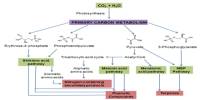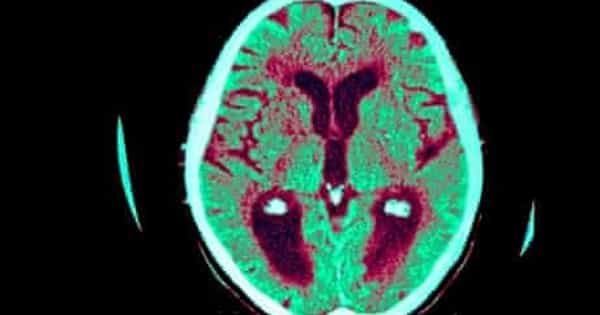Reproduction in bacterial cell divide equally into two, following replication of DNA. The cell wall and cytoplasm also split resulting in the formation of two daughter cells.
Sexual Reproduction: In bacterial sexual reproduction there is no meiosis, formation of gametes and zygote. Instead, it involves transfer of a portion of genetic material (DNA) from a donor cell to a recipient cell. This process is called as genetic recombination or parasexuality. It is known to occur in the following three ways:
Transformation: In this process, one kind of bacterium is transformed into another kind. It takes place by a transfer of DNA from a capsulated bacterium into a non-capsulated bacterium. It has been observed in Diplococcus bacteria.
Transduction: In this process, DNA of a bacterial cell (donor) is transferred into another bacterial cell with the help of a bacteriophage. This process is known to occur in several bacterial species such as Salmonella, Escherichia, Micrococcus and Stigella.
Conjugation: It is a process in which the genetic material of a bacterial cell of a particular strain is transferred into that of another bacterial cell of a different strain. Of the two strains of bacteria involved, one acts as donor (or male) and the other as a recipient (or female). The donor cells are known to possess a sex factor or fertility factor (F factor) as a component of its circular DNA (F+ strain). The recipient cell does not have this factor and hence it is described as F- strain. A conjugation between cells of F+ and F- strains always results in the formation of F+ bacterial cells in the progeny.

2. Asexual reproduction
A) Binary fission: It is the most common mode of asexual reproduction. The cytoplasm and nucleotide of a bacterial cell divide equally into two, following replication of DNA. The cell wall and cytoplasm also split resulting in the formation of two daughter cells.
Under favorable conditions, a bacterial cell divides by fission once in every 20 minutes.

B) Budding in bacteria: Some bacteria reproduce by budding process in which small bud develops at one end of cell, this enlarge and developed into new cell and separate from the mother cell. Budding has been observed in some Gram-Positive Bacteria eg. Planctomycetes, Cyanobacteria.
C) Fragmentation: It is a form of asexual reproduction or cloning where an organism is split into fragments. Bacteria that reproduce extensive filamentous growth, reproduce by fragmentation of the filaments into small bacillary or coccoid cells, each of which gives rise to new growth.
D) Septum formation: Synthesis of new wall begins at the equatorial ridge. From this site new wall grows peripherally. Half of the entire wall of each daughter cell is derived from the septum.
Bacterial Growth Curve:
Bacterial growth is the division of one bacterium into two daughter cells in a process called binary fission. Providing no mutational event occurs the resulting daughter cells are genetically identical to the original cell. Hence, “local doubling” of the bacterial population occurs. Both daughter cells from the division do not necessarily survive. However, if the number surviving exceeds unity on average, the bacterial population undergoes exponential growth.

In autecological studies, bacterial growth in batch culture can be modeled with four different phases: lag phase (A), exponential or log phase (B), stationary phase (C), and death phase (D).
- Lag phase (A): During lag phase, bacteria adapt themselves to growth conditions. It is the period where the individual bacteria are maturing and not yet able to divide. During the lag phase of the bacterial growth cycle, synthesis of RNA, enzymes and other molecules occurs.
- Exponential or log phase (B): Exponential phase (sometimes called the log phase or the logarithmic phase) is a period characterized by cell doubling. The number of new bacteria appearing per unit time is proportional to the present population. If growth is not limited, doubling will continue at a constant rate so both the number of cells and the rate of population increase doubles with each consecutive time period. For this type of exponential growth, plotting the natural logarithm of cell number against time produces a straight line. The slope of this line is the specific growth rate of the organism, which is a measure of the number of divisions per cell per unit time.
- Stationary phase (C): During stationary phase, the growth rate slows as a result of nutrient depletion and accumulation of toxic products. This phase is reached as the bacteria begin to exhaust the resources that are available to them. This phase is a constant value as the rate of bacterial growth is equal to the rate of bacterial death.
- Death phase (D): At death phase, bacteria run out of nutrients and die.

















